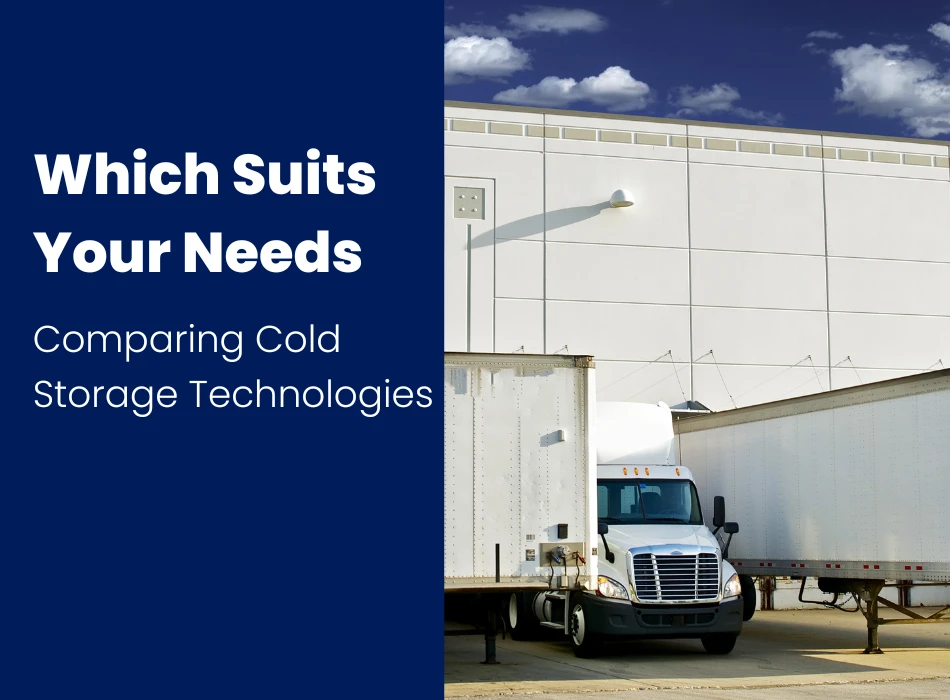Comparing Cold Storage Technologies: Which Suits Your Needs
Explore different cold storage technologies and discover which solution best suits your business needs with this comprehensive comparison guide.

Choosing the right cold storage technology is crucial for businesses that handle perishable goods, whether in food service, pharmaceuticals, or other industries. With various options available, understanding the features and benefits of each technology will help you make an informed decision. This article compares different cold storage technologies to identify which best suits your needs.
Refrigerated Containers
Overview: Refrigerated containers are versatile and mobile solutions equipped with cooling units that maintain temperatures between -30°F and 70°F. They are ideal for both storage and transportation.
Pros:
- Flexibility: Can be placed in various locations (warehouses, docks, trailers).
- Customizable: Features like remote temperature monitoring can be added.
- Cost-Effective: Generally lower initial investment compared to building a permanent facility.
Cons:
- Space Limitations: May not offer as much capacity as larger cold storage facilities.
Walk-In Refrigerators/Freezers
Overview: These units are designed for businesses needing regular access to larger quantities of perishable items. They can store a wide range of goods at controlled temperatures.
Pros:
- Accessibility: Easy access for inventory management.
- Capacity Options: Available in various sizes to fit different needs.
- Energy Efficiency: Modern units often come with energy-saving features.
Cons:
- Higher Initial Costs: More expensive than portable options.
Blast Freezers
Overview: Also known as blast chillers, these units rapidly chill products before longer-term storage. They are essential for preserving the quality of food items by quickly reducing their temperature.
Pros:
- Speed: Quickly lowers temperatures to prevent bacterial growth.
- Quality Preservation: Maintains texture and flavor of food products.
Cons:
- Specialized Use: Primarily beneficial for businesses involved in food processing or production.
Cryogenic Cooling Systems
Overview: These systems utilize liquid nitrogen or carbon dioxide to achieve ultra-low temperatures, making them suitable for sensitive biological products and pharmaceuticals.
Pros:
- Ultra-Low Temperatures: Ideal for storing vaccines and biological samples.
- Precision Control: Maintains strict temperature requirements.
Cons:
- Costly Operation: Higher operational costs due to specialized equipment and maintenance.
Thermal Energy Storage (TES) Systems
Overview: TES systems allow cold storage operators to cut energy costs significantly by absorbing heat infiltration and cycling refrigeration systems off during peak hours.
Pros:
- Energy Savings: Can reduce energy costs by up to 50% and improve refrigeration efficiency by an average of 26%.
- Flexibility in Operations: Allows refrigeration systems to cycle off for extended periods while maintaining stable temperatures.
Cons:
- Initial Setup Cost: May require a higher upfront investment compared to traditional systems.
Automated Storage and Retrieval Systems (AS/RS)
Overview: These systems utilize robotic technology to automatically store and retrieve goods, minimizing manual labor and improving efficiency in cold storage facilities.
Pros:
- Operational Efficiency: Reduces time spent on inventory management.
- Accuracy in Handling Products: Minimizes human error during storage and retrieval operations.
Cons:
- High Initial Investment and Complexity: Requires significant capital investment and technical expertise to implement effectively.
Conclusion
When comparing cold storage technologies, it’s essential to consider your specific needs regarding product type, volume, accessibility, and budget. Refrigerated containers offer flexibility, while walk-in refrigerators provide capacity for larger operations. Blast freezers are ideal for rapid cooling needs, while cryogenic systems cater to ultra-sensitive products. Thermal energy storage systems can significantly reduce operational costs but may require a higher initial investment. Automated systems enhance efficiency but come with complexity and cost considerations.
By evaluating these factors, you can choose the cold storage solution that best fits your business requirements and ensures the integrity of your perishable goods.